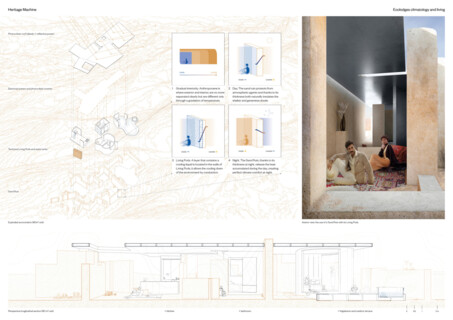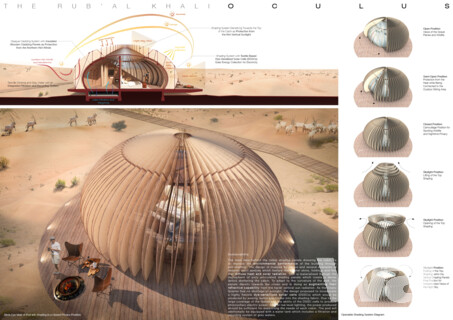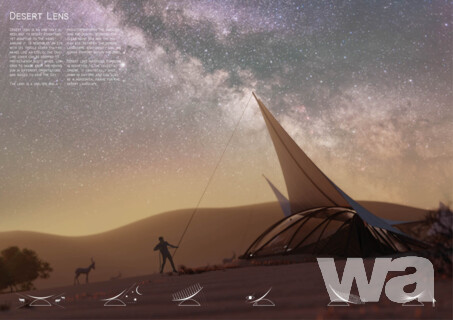- wa-ID
- wa-2027921
- Tag der Veröffentlichung
- 26.11.2019
- Aktualisiert am
- 26.11.2019
- Verfahrensart
- Offener Wettbewerb
- Zulassungsbereich
-
Andere
- Teilnehmer
- Offen für alle
- Koordination
- Bee Breeders (former HMMD Group), Singapore
- Bewerbungsschluss
- 01.06.2020
- Abgabetermin
- 10.07.2020
- Bekanntgabe
- 02.08.2020
Verfahrensart
Offener Wettbewerb
Der Wettbewerb
Der arabische Oryx ist eine mittelgroße Antilope, die im Nahen Osten beheimatet ist. Es hat lange, gerade Hörner, einen büscheligen Schwanz und einen deutlichen Schulterstoß und ist das kleinste Mitglied der Gattung Oryx. Der arabische Oryx stammt aus Wüsten- und Steppengebieten der Arabischen Halbinsel und galt Anfang der 1970er Jahre in freier Wildbahn als ausgestorben.
Eine Reihe von Zuchtprogrammen in Zoos und privaten Reservaten führte jedoch dazu, dass die Anzahl der arabischen Oryx langsam zunahm und ab 1980 wieder in die Wildnis eingeführt wurde. Ab 2009 leben eine Reihe von arabischen Oryx in Oman, Saudi-Arabien, USA Arabische Emirate und Jordanien, dennoch ist die Art als gefährdet eingestuft.
Abu Dhabi ist die Hauptstadt der Vereinigten Arabischen Emirate und beheimatet eine reiche, natürliche Artenvielfalt, zu der eine Reihe einzigartiger Wüstenarten gehören, die sonst nirgendwo auf der Welt zu finden sind, einschließlich des arabischen Oryx. Die Umweltbehörde - Abu Dhabi (EAD) ist eine der treibenden Kräfte bei den Bemühungen, die schwindende natürliche Bevölkerung des Emirats zu erhalten und eine Reihe von Umweltschutzgebieten einzurichten und zu erhalten.
Das 2018 gegründete „Sheikh Zayed Protected Areas Network“ besteht aus 13 terrestrischen Schutzgebieten und deckt über 15% des Territoriums von Abu Dhabi ab. Das Schutzgebiet Qasar Al Sarab umfasst 1304 Quadratkilometer, in denen sich der arabische Oryx frei bewegt. In dem 5975 Quadratkilometer großen arabischen Oryx-Schutzgebiet lebt die größte arabische Oryx-Bevölkerung der Welt.
Um das öffentliche Interesse an diesen erstaunlichen Kreaturen aufrechtzuerhalten und es der Öffentlichkeit zu ermöglichen, sie aus der Nähe zu betrachten, möchte die Umweltbehörde - Abu Dhabi (EAD) eine Reihe nachhaltiger Besucherhütten schaffen, die im gesamten Schutzgebiet positioniert werden können. Das wichtigste Gestaltungsmerkmal müsste die Nachhaltigkeit sein. In solch sensiblen natürlichen Umgebungen dürfen die Besucherhütten keine negativen Auswirkungen auf die Umwelt der Schutzgebiete oder der darin lebenden Arten haben.
Die Umweltbehörde - Abu Dhabi (EAD) ist daran interessiert, ungefähr 25 Einheiten in ihren Schutzgebieten zu errichten, da solche Gewinnerentwürfe kreative Lösungen für den Bau und Betrieb in diesen heiklen Umgebungen beinhalten müssen und gleichzeitig eine aufregende und komfortable Umgebung bieten müssen Erfahrung für Besucher.
----------------------
The Competition
The Arabian Oryx is a medium-sized antelope that is native to the Middle East. It has long, straight horns, a tufted tail and a distinct shoulder bump, and it is the smallest member of the genus Oryx. Native to desert and steppe areas of the Arabian Peninsula, the Arabian Oryx was considered extinct in the wild at the start of the 1970s.
However, a number of breeding programs in zoos and private reserves meant that Arabian Oryx numbers slowly increased, and they were reintroduced into the wild from 1980. As of 2009, there are a number of Arabian Oryx living in Oman, Saudi Arabia, the United Arab Emirates, and Jordan, yet the species is still listed as vulnerable.
Abu Dhabi is the capital of the United Arab Emirates, and is home to rich, natural biodiversity which includes a number of unique desert-dwelling species that cannot be found anywhere else in the world, including the Arabian Oryx. The Environment Agency - Abu Dhabi (EAD) is one of the driving forces behind efforts to maintain the emirate’s dwindling natural population, setting up and maintaining a number of environmentally protected areas.
Established in 2018, the “Sheikh Zayed Protected Areas Network” consists of 13 terrestrial protected areas and covers over 15% of Abu Dhabi’s territory. The Qasar Al Sarab Protected Area covers 1304 square kilometers in which the Arabian Oryx roams freely; and the Arabian Oryx Protected Area, which covers 5975 square kilometers, is home to the largest population of Arabian Oryx in the world.
In order to maintain public interest in these amazing creatures, and allow the public to view them up close, the Environment Agency - Abu Dhabi (EAD) are looking to create a series of sustainable visitor lodges that can be positioned throughout the protected area. The key design feature would need to be sustainability, in such sensitive natural environments, the visitor lodges must not have a negative impact on the environment of the protected areas or any species living within.
The Environment Agency - Abu Dhabi (EAD) is interested in constructing approximately 25 units within their protected areas, as such winning designs will need to involve creative solutions for construction and operation within these delicate environments, while at the same time providing an exciting and comfortable experience for visitors.
Mehr unter
beebreeders.com/architecturecompetitions/ecolodges
Offener Wettbewerb
Der Wettbewerb
Der arabische Oryx ist eine mittelgroße Antilope, die im Nahen Osten beheimatet ist. Es hat lange, gerade Hörner, einen büscheligen Schwanz und einen deutlichen Schulterstoß und ist das kleinste Mitglied der Gattung Oryx. Der arabische Oryx stammt aus Wüsten- und Steppengebieten der Arabischen Halbinsel und galt Anfang der 1970er Jahre in freier Wildbahn als ausgestorben.
Eine Reihe von Zuchtprogrammen in Zoos und privaten Reservaten führte jedoch dazu, dass die Anzahl der arabischen Oryx langsam zunahm und ab 1980 wieder in die Wildnis eingeführt wurde. Ab 2009 leben eine Reihe von arabischen Oryx in Oman, Saudi-Arabien, USA Arabische Emirate und Jordanien, dennoch ist die Art als gefährdet eingestuft.
Abu Dhabi ist die Hauptstadt der Vereinigten Arabischen Emirate und beheimatet eine reiche, natürliche Artenvielfalt, zu der eine Reihe einzigartiger Wüstenarten gehören, die sonst nirgendwo auf der Welt zu finden sind, einschließlich des arabischen Oryx. Die Umweltbehörde - Abu Dhabi (EAD) ist eine der treibenden Kräfte bei den Bemühungen, die schwindende natürliche Bevölkerung des Emirats zu erhalten und eine Reihe von Umweltschutzgebieten einzurichten und zu erhalten.
Das 2018 gegründete „Sheikh Zayed Protected Areas Network“ besteht aus 13 terrestrischen Schutzgebieten und deckt über 15% des Territoriums von Abu Dhabi ab. Das Schutzgebiet Qasar Al Sarab umfasst 1304 Quadratkilometer, in denen sich der arabische Oryx frei bewegt. In dem 5975 Quadratkilometer großen arabischen Oryx-Schutzgebiet lebt die größte arabische Oryx-Bevölkerung der Welt.
Um das öffentliche Interesse an diesen erstaunlichen Kreaturen aufrechtzuerhalten und es der Öffentlichkeit zu ermöglichen, sie aus der Nähe zu betrachten, möchte die Umweltbehörde - Abu Dhabi (EAD) eine Reihe nachhaltiger Besucherhütten schaffen, die im gesamten Schutzgebiet positioniert werden können. Das wichtigste Gestaltungsmerkmal müsste die Nachhaltigkeit sein. In solch sensiblen natürlichen Umgebungen dürfen die Besucherhütten keine negativen Auswirkungen auf die Umwelt der Schutzgebiete oder der darin lebenden Arten haben.
Die Umweltbehörde - Abu Dhabi (EAD) ist daran interessiert, ungefähr 25 Einheiten in ihren Schutzgebieten zu errichten, da solche Gewinnerentwürfe kreative Lösungen für den Bau und Betrieb in diesen heiklen Umgebungen beinhalten müssen und gleichzeitig eine aufregende und komfortable Umgebung bieten müssen Erfahrung für Besucher.
----------------------
The Competition
The Arabian Oryx is a medium-sized antelope that is native to the Middle East. It has long, straight horns, a tufted tail and a distinct shoulder bump, and it is the smallest member of the genus Oryx. Native to desert and steppe areas of the Arabian Peninsula, the Arabian Oryx was considered extinct in the wild at the start of the 1970s.
However, a number of breeding programs in zoos and private reserves meant that Arabian Oryx numbers slowly increased, and they were reintroduced into the wild from 1980. As of 2009, there are a number of Arabian Oryx living in Oman, Saudi Arabia, the United Arab Emirates, and Jordan, yet the species is still listed as vulnerable.
Abu Dhabi is the capital of the United Arab Emirates, and is home to rich, natural biodiversity which includes a number of unique desert-dwelling species that cannot be found anywhere else in the world, including the Arabian Oryx. The Environment Agency - Abu Dhabi (EAD) is one of the driving forces behind efforts to maintain the emirate’s dwindling natural population, setting up and maintaining a number of environmentally protected areas.
Established in 2018, the “Sheikh Zayed Protected Areas Network” consists of 13 terrestrial protected areas and covers over 15% of Abu Dhabi’s territory. The Qasar Al Sarab Protected Area covers 1304 square kilometers in which the Arabian Oryx roams freely; and the Arabian Oryx Protected Area, which covers 5975 square kilometers, is home to the largest population of Arabian Oryx in the world.
In order to maintain public interest in these amazing creatures, and allow the public to view them up close, the Environment Agency - Abu Dhabi (EAD) are looking to create a series of sustainable visitor lodges that can be positioned throughout the protected area. The key design feature would need to be sustainability, in such sensitive natural environments, the visitor lodges must not have a negative impact on the environment of the protected areas or any species living within.
The Environment Agency - Abu Dhabi (EAD) is interested in constructing approximately 25 units within their protected areas, as such winning designs will need to involve creative solutions for construction and operation within these delicate environments, while at the same time providing an exciting and comfortable experience for visitors.
Mehr unter
beebreeders.com/architecturecompetitions/ecolodges
Mega Dunes Eco Lodges - Abu Dhabi
Organizers
Bee Breeders
Architecture Competition Organizers
beebreeders.com
Official Partners:
Environment Agency - Abu Dhabi
www.ead.ae
The Competition
The Arabian Oryx is a medium-sized antelope that is native to the Middle East. It has long, straight horns, a tufted tail and a distinct shoulder bump, and it is the smallest member of the genus Oryx. Native to desert and steppe areas of the Arabian Peninsula, the Arabian Oryx was considered extinct in the wild at the start of the 1970s.
However, a number of breeding programs in zoos and private reserves meant that Arabian Oryx numbers slowly increased, and they were reintroduced into the wild from 1980. As of 2009, there are a number of Arabian Oryx living in Oman, Saudi Arabia, the United Arab Emirates, and Jordan, yet the species is still listed as vulnerable.
Abu Dhabi is the capital of the United Arab Emirates, and is home to rich, natural biodiversity which includes a number of unique desert-dwelling species that cannot be found anywhere else in the world, including the Arabian Oryx. The Environment Agency - Abu Dhabi (EAD) is one of the driving forces behind efforts to maintain the emirate’s dwindling natural population, setting up and maintaining a number of environmentally protected areas.
Established in 2018, the “Sheikh Zayed Protected Areas Network” consists of 13 terrestrial protected areas and covers over 15% of Abu Dhabi’s territory. The Qasar Al Sarab Protected Area covers 1304 square kilometers in which the Arabian Oryx roams freely; and the Arabian Oryx Protected Area, which covers 5975 square kilometers, is home to the largest population of Arabian Oryx in the world.
In order to maintain public interest in these amazing creatures, and allow the public to view them up close, the Environment Agency - Abu Dhabi (EAD) are looking to create a series of sustainable visitor lodges that can be positioned throughout the protected area. The key design feature would need to be sustainability, in such sensitive natural environments, the visitor lodges must not have a negative impact on the environment of the protected areas or any species living within.
The Environment Agency - Abu Dhabi (EAD) is interested in constructing approximately 25 units within their protected areas, as such winning designs will need to involve creative solutions for construction and operation within these delicate environments, while at the same time providing an exciting and comfortable experience for visitors.
Competition Type
Open International Architecture Competition
Eligibility
Competition is open to all. No professional qualification is required.
Design proposals can be developed individually or by teams (4 team members maximum).
Correspondence with organizers must be conducted in English;
All information submitted by participants must be in English.
Schedule
Closing date for registration: 01 June 2020
Closing date for project submission: 10 July 2020 (11:59pm GMT+0)
Announcement of winners: 02 August 2020
Prizes
Total Prize Fund: US $7,000 + Construction
1st Prize: US $3,000 + Publications + Certificate of Achievement
2nd Prize: US $1,500 + Publications + Certificate of Achievement
3rd Prize: US $500 + Publications + Certificate of Achievement
The Client‘s Favorite: US $1.000 + Publications + Certificate of Achievement
BB Student Award: US $500 + Publications + Certificate of Achievement
BB Green Award: US $500 + Publications + Certificate of Achievement
6 Honorable Mentions: Publications + Certificate of Achievement
More information and documents at
beebreeders.com/architecturecompetitions/ecolodges
Organizers
Bee Breeders
Architecture Competition Organizers
beebreeders.com
Official Partners:
Environment Agency - Abu Dhabi
www.ead.ae
The Competition
The Arabian Oryx is a medium-sized antelope that is native to the Middle East. It has long, straight horns, a tufted tail and a distinct shoulder bump, and it is the smallest member of the genus Oryx. Native to desert and steppe areas of the Arabian Peninsula, the Arabian Oryx was considered extinct in the wild at the start of the 1970s.
However, a number of breeding programs in zoos and private reserves meant that Arabian Oryx numbers slowly increased, and they were reintroduced into the wild from 1980. As of 2009, there are a number of Arabian Oryx living in Oman, Saudi Arabia, the United Arab Emirates, and Jordan, yet the species is still listed as vulnerable.
Abu Dhabi is the capital of the United Arab Emirates, and is home to rich, natural biodiversity which includes a number of unique desert-dwelling species that cannot be found anywhere else in the world, including the Arabian Oryx. The Environment Agency - Abu Dhabi (EAD) is one of the driving forces behind efforts to maintain the emirate’s dwindling natural population, setting up and maintaining a number of environmentally protected areas.
Established in 2018, the “Sheikh Zayed Protected Areas Network” consists of 13 terrestrial protected areas and covers over 15% of Abu Dhabi’s territory. The Qasar Al Sarab Protected Area covers 1304 square kilometers in which the Arabian Oryx roams freely; and the Arabian Oryx Protected Area, which covers 5975 square kilometers, is home to the largest population of Arabian Oryx in the world.
In order to maintain public interest in these amazing creatures, and allow the public to view them up close, the Environment Agency - Abu Dhabi (EAD) are looking to create a series of sustainable visitor lodges that can be positioned throughout the protected area. The key design feature would need to be sustainability, in such sensitive natural environments, the visitor lodges must not have a negative impact on the environment of the protected areas or any species living within.
The Environment Agency - Abu Dhabi (EAD) is interested in constructing approximately 25 units within their protected areas, as such winning designs will need to involve creative solutions for construction and operation within these delicate environments, while at the same time providing an exciting and comfortable experience for visitors.
Competition Type
Open International Architecture Competition
Eligibility
Competition is open to all. No professional qualification is required.
Design proposals can be developed individually or by teams (4 team members maximum).
Correspondence with organizers must be conducted in English;
All information submitted by participants must be in English.
Schedule
Closing date for registration: 01 June 2020
Closing date for project submission: 10 July 2020 (11:59pm GMT+0)
Announcement of winners: 02 August 2020
Prizes
Total Prize Fund: US $7,000 + Construction
1st Prize: US $3,000 + Publications + Certificate of Achievement
2nd Prize: US $1,500 + Publications + Certificate of Achievement
3rd Prize: US $500 + Publications + Certificate of Achievement
The Client‘s Favorite: US $1.000 + Publications + Certificate of Achievement
BB Student Award: US $500 + Publications + Certificate of Achievement
BB Green Award: US $500 + Publications + Certificate of Achievement
6 Honorable Mentions: Publications + Certificate of Achievement
More information and documents at
beebreeders.com/architecturecompetitions/ecolodges














